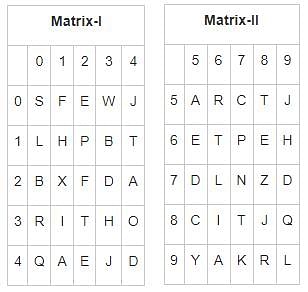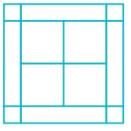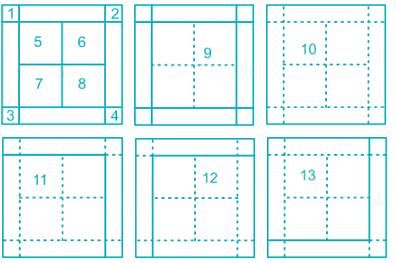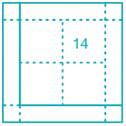SSC MTS Practice Test -3 - SSC MTS / SSC GD MCQ
30 Questions MCQ Test SSC MTS Mock Test Series 2025 - SSC MTS Practice Test -3
In the following question, some part of the sentence may have errors. Find out which part of the sentence has an error and select the appropriate option. If a sentence is free from error, select 'No Error'.
Q. They had marched (1) / the whole journey (2) / on top speed. (3) / No Error (4)
In the following question, some part of the sentence may have errors. Find out which part of the sentence has an error and select the appropriate option. If a sentence is free from error, select 'No Error'.
Q. You ordered (1) / the goods and so (2) / they have been send. (3) / No Error (4)
| 1 Crore+ students have signed up on EduRev. Have you? Download the App |
Which of the following words/phrases given below in the options should replace the phrase in undrline in the sentence to make it grammatically correct? If the sentence is correct as it is given then mark 'no error'.
Q. Bad habits grow unconsciously.
Which of the following words/phrases given below in the options should replace the phrase in underline in the sentence to make it grammatically correct? If the sentence is correct as it is given then mark 'no error'.
Q. The early birds catches the worm.
In the following question, the sentence is given with a blank to be filled in with an appropriate word. Select the correct alternative out of the four and indicate it by selecting the appropriate option.
Q. All matter _______ indestructible.
In the following question, the sentence is given with a blank to be filled in with an appropriate word. Select the correct alternative out of the four and indicate it by selecting the appropriate option.
Q. We should profit _______ experience.
A passage is given below with five blanks labelled (A)-(E). Below the passage, four options are given for each blank. Choose the word that fits each blank most appropriately in the context of the passage, and mark the corresponding answer.
On November 8th, 2016, Prime Minister Narendra Modi made a dramatic __(A)__. In one go, he outlawed notes of Rs 500 and Rs 1,000 that constituted 86 percent of the country’s currency in __(B)__. It was perhaps India’s boldest policy experiment in over a quarter century.
A year later, a __(C)__ of sorts has emerged: while intellectuals and analysts in India have slammed the step, Indians at large have reacted positively to it. The usual explanation is that the economics and politics of demonetisation bear no __(D)__ with the idea of finding favour with citizens by virtue of the populist appeal of its moral logic. Lost in the noise are the modernising __(E)__ of a larger process that began with creating no-frill bank accounts for the underprivileged and has culminated—for the time being—in major tax reform, the Goods and Services Tax (GST).
Q. Which of the following words most appropriately fits the blank labelled (A)?
A passage is given below with five blanks labelled (A)-(E). Below the passage, four options are given for each blank. Choose the word that fits each blank most appropriately in the context of the passage, and mark the corresponding answer.
On November 8th, 2016, Prime Minister Narendra Modi made a dramatic __(A)__. In one go, he outlawed notes of Rs 500 and Rs 1,000 that constituted 86 percent of the country’s currency in __(B)__. It was perhaps India’s boldest policy experiment in over a quarter century.
A year later, a __(C)__ of sorts has emerged: while intellectuals and analysts in India have slammed the step, Indians at large have reacted positively to it. The usual explanation is that the economics and politics of demonetisation bear no __(D)__ with the idea of finding favour with citizens by virtue of the populist appeal of its moral logic. Lost in the noise are the modernising __(E)__ of a larger process that began with creating no-frill bank accounts for the underprivileged and has culminated—for the time being—in major tax reform, the Goods and Services Tax (GST).
Q. Which of the following words most appropriately fits the blank labelled (B)?
A passage is given below with five blanks labelled (A)-(E). Below the passage, four options are given for each blank. Choose the word that fits each blank most appropriately in the context of the passage, and mark the corresponding answer.
On November 8th, 2016, Prime Minister Narendra Modi made a dramatic __(A)__. In one go, he outlawed notes of Rs 500 and Rs 1,000 that constituted 86 percent of the country’s currency in __(B)__. It was perhaps India’s boldest policy experiment in over a quarter century.
A year later, a __(C)__ of sorts has emerged: while intellectuals and analysts in India have slammed the step, Indians at large have reacted positively to it. The usual explanation is that the economics and politics of demonetisation bear no __(D)__ with the idea of finding favour with citizens by virtue of the populist appeal of its moral logic. Lost in the noise are the modernising __(E)__ of a larger process that began with creating no-frill bank accounts for the underprivileged and has culminated—for the time being—in major tax reform, the Goods and Services Tax (GST).
Q. Which of the following words most appropriately fits the blank labelled (C)?
A passage is given below with five blanks labelled (A)-(E). Below the passage, four options are given for each blank. Choose the word that fits each blank most appropriately in the context of the passage, and mark the corresponding answer.
On November 8th, 2016, Prime Minister Narendra Modi made a dramatic __(A)__. In one go, he outlawed notes of Rs 500 and Rs 1,000 that constituted 86 percent of the country’s currency in __(B)__. It was perhaps India’s boldest policy experiment in over a quarter century.
A year later, a __(C)__ of sorts has emerged: while intellectuals and analysts in India have slammed the step, Indians at large have reacted positively to it. The usual explanation is that the economics and politics of demonetisation bear no __(D)__ with the idea of finding favour with citizens by virtue of the populist appeal of its moral logic. Lost in the noise are the modernising __(E)__ of a larger process that began with creating no-frill bank accounts for the underprivileged and has culminated—for the time being—in major tax reform, the Goods and Services Tax (GST).
Q. Which of the following words most appropriately fits the blank labelled (D)?
A passage is given below with five blanks labelled (A)-(E). Below the passage, four options are given for each blank. Choose the word that fits each blank most appropriately in the context of the passage, and mark the corresponding answer.
On November 8th, 2016, Prime Minister Narendra Modi made a dramatic __(A)__. In one go, he outlawed notes of Rs 500 and Rs 1,000 that constituted 86 percent of the country’s currency in __(B)__. It was perhaps India’s boldest policy experiment in over a quarter century.
A year later, a __(C)__ of sorts has emerged: while intellectuals and analysts in India have slammed the step, Indians at large have reacted positively to it. The usual explanation is that the economics and politics of demonetisation bear no __(D)__ with the idea of finding favour with citizens by virtue of the populist appeal of its moral logic. Lost in the noise are the modernising __(E)__ of a larger process that began with creating no-frill bank accounts for the underprivileged and has culminated—for the time being—in major tax reform, the Goods and Services Tax (GST).
Q. Which of the following words most appropriately fits the blank labelled (E)?
In the following question, out of the four given alternatives, select the alternative which is the best substitute for the phrase.
Q. Spoken or done without preparation
In the following question, out of the four given alternatives, select the alternative which is the best substitute for the phrase.
Q. A news article that reports the recent death of a person.
In the following question, out of the given four alternatives, select the one which best expresses the meaning of the given word.
Fair
In the following question, out of the given four alternatives, select the one which best expresses the meaning of the given word.
Diligent
In the following question, out of the given four alternatives, select the one which best expresses the meaning of the given word.
Considerate
In the following question, out of the given four alternatives, select the one which is opposite in meaning of the given word.
Wax
In the following question, out of the given four alternatives, select the one which is opposite in meaning of the given word.
Vice
In the following question, out of the given four alternatives, select the one which is opposite in meaning of the given word.
Spendthrift
In the following question, out of the four given alternatives, select the alternative which best expresses the meaning of the Idiom/Phrase.
Hit the nail on the head
In the following question, out of the four given alternatives, select the alternative which best expresses the meaning of the Idiom/Phrase.
The gift of the gab
In the following question, a word has been written in four different ways out of which only one is correctly spelt. Select the correctly spelt word.
In the following question, a word has been written in four different ways out of which only one is correctly spelt. Select the correctly spelt word.
Rearrange the parts of the sentence in correct order.
Happy is the man
P: habit of reading
Q: who acquires the
R: when he is young
Rearrange the parts of the sentence in the correct order.
There is not much
P: need for proving to
Q: holidays are necessary
R: most schoolboys that
A sheet of paper is folded and cut as shown in the figure below. From the options given, find how the figure will appear when it is opened.

In the following question below are given some statements followed by some conclusions. Taking the given statements to be true even if they seem to be at variance from commonly known facts, read all the conclusions and then decide which of the given conclusion logically follows the given statements.
Statements:
I. Some denims are blue.
II. Some blue are hairs.
Conclusions:
I. All denims are hairs.
II. Some hairs are denims.
A word is represented by only one set of numbers as given in any one of the alternatives. The sets of numbers given in the alternatives are represented by two classes of alphabets as shown in the given two matrices. The columns and rows of Matrix-I are numbered from 0 to 4 and that of Matrix-II are numbered from 5 to 9. A letter from these matrices can be represented first by its row and next by its column, for example, ‘P’ can be represented by 12, 67, etc., and ‘Q’ can be represented by 40, 89, etc. Similarly, you have to identify the set for the word “TAB”.

In the following question, select the odd number from the given alternatives.
|
78 docs|20 tests
|
|
78 docs|20 tests
|






















